NYC’s Forgotten ‘War on Christmas Trees’
Discover how an obscure holiday crackdown affects festive street vendors today!



Steinway Mansion Carriage House in Astoria, Queens, now The Modern Art Foundry
Take a trip around New York City and you will be surrounded by art and history, nearly everywhere you go. But what if we told you that within our city lives the beating heart of the art of sculpting? The roots of some of the most recognizable works of art –from the Alice In Wonderland sculpture in Central Park to the Fiorello LaGuardia statue in LaGuardia Place – are actually hidden in plain sight in Astoria, Queens.
Located in the former carriage house of the famous Steinway Mansion in northern Astoria, the Modern Art Foundry is a truly fascinating mecca for sculptors. Inside this hidden gem, artistic visions become realized in metal by a passionate team of craftsmen led by third generation owner, Jeffrey Spring.
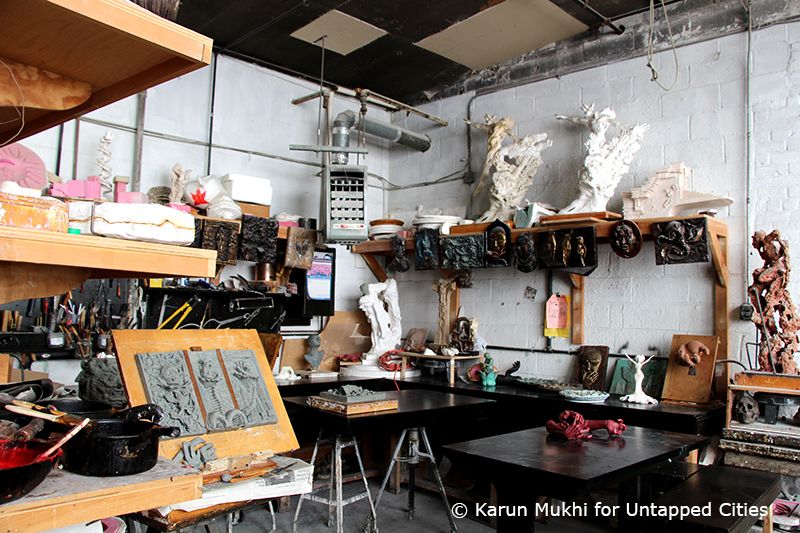
Artwork by student sculptors await the next step in their journey from concept to finished artwork.
The Modern Art Foundry was established in 1932 by John Spring in an prior location at the end of Astoria Boulevard. In 1947, the Foundry moved to its current location, a carriage house which used to serve the Steinway Mansion. The original structure is largely intact and we got to see bits of the original doorway, the ceiling and some of the decorative moldings on the exterior of the structure.


Jeffrey Spring of The Modern Art Foundry explains the processes that go on in the foundry
The foundry moved to this location after another owner had used it through the 1930s and 40s. Over the course of time, the foundry has been managed by its founder John Spring, Robert Spring, John’s son and, currently, by Jeffrey Spring & his sister Mary Jo, John’s grandchildren. The entire setup had the feel of a family legacy which continues to contribute to the art world every day.
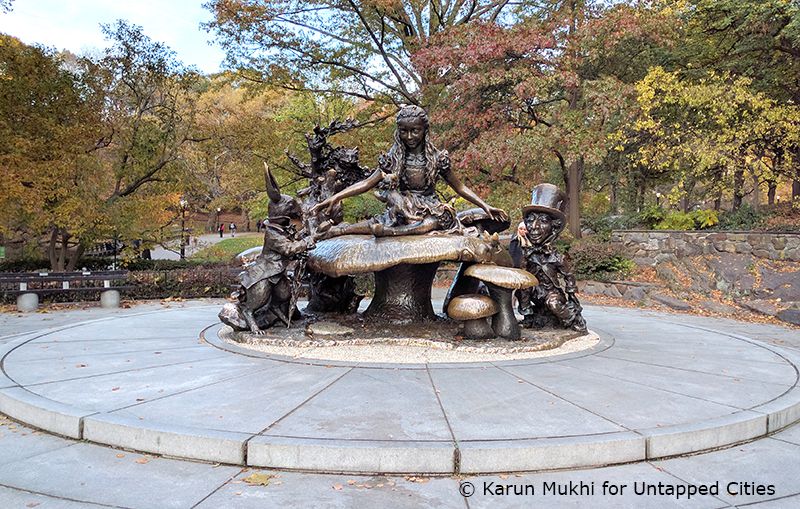
Alice In Wonderland sculpture in Central Park – cast at The Modern Art Foundry
The Modern Art Foundry is essentially a service provider, a conduit, if you will, between the artist’s vision and the end product which is the actual art piece. For those unfamiliar with the process of creating sculptures, artists are usually partnered by foundries where their artwork is cast into metal using a multi-staged process that requires patience, time and an incredibly diligent eye for detail. Artists often spend time in the foundry, working with the team to make fine adjustments and corrections to the work as it gets closer to the stage of actual metal casting. We were fortunate enough to get a first-person look at everything that goes into turning art from concept into creation.

A wax “Positive” of a sculpture waits for final touches before being cast into bronze.
An artist would typically produce a sculpture in clay or in drawing form. The foundry then takes this work and builds a rubber “negative” mold which takes the exact shape of the object. This shape is then cast in wax to create a “positive” sculpture which is used as the final model to check for any errors and to make fine corrections to shapes, lines and details.
It is often crucial for artists to be present at this stage to make sure that the wax model matches what they’re looking for. This model is then adorned with wax tubes that make it look almost tree-like with branches built around the sculpture. The entire wax structure is then covered in a silica based slurry that builds a cast around the wax.
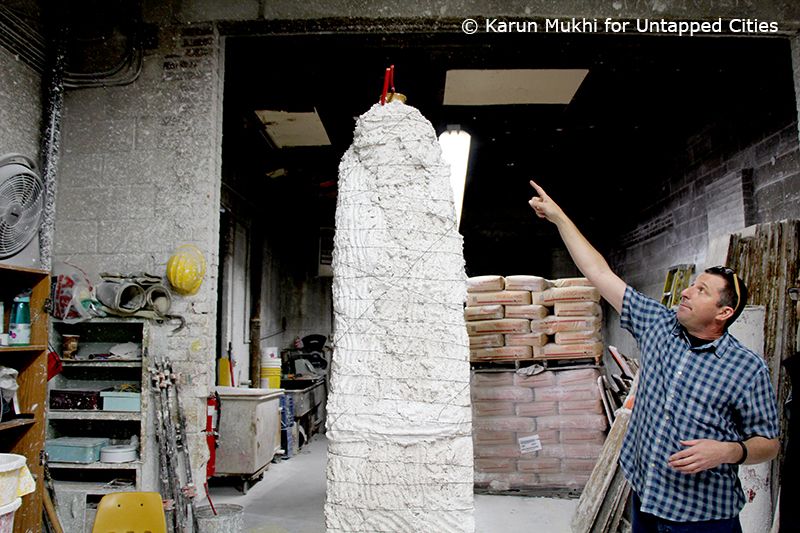
“That’s where the metal goes in” – A silica mold ready for baking to harden itself and melt the wax away
During the baking process, the wax melts away, leaving an exact shape of the intended sculpture in the silica mold. Finally, the metal of choice, usually bronze but sometimes aluminum, is poured into the mold to create the piece. Once poured and cooled, the silica cast is broken open to reveal the sculpture.

Brick ovens remain the method of choice for baking molds at The Modern Art Foundry.
Once it’s out, the branches are removed and the piece goes through a process of cleaning in an acid bath. Fine finishing then follows this process along with any modifications, usually related to the patina or shade of the metal work desired by the artist. The patina stage is yet another amazing step in the process where flames and chemicals are used to bring out the color in each of the works.
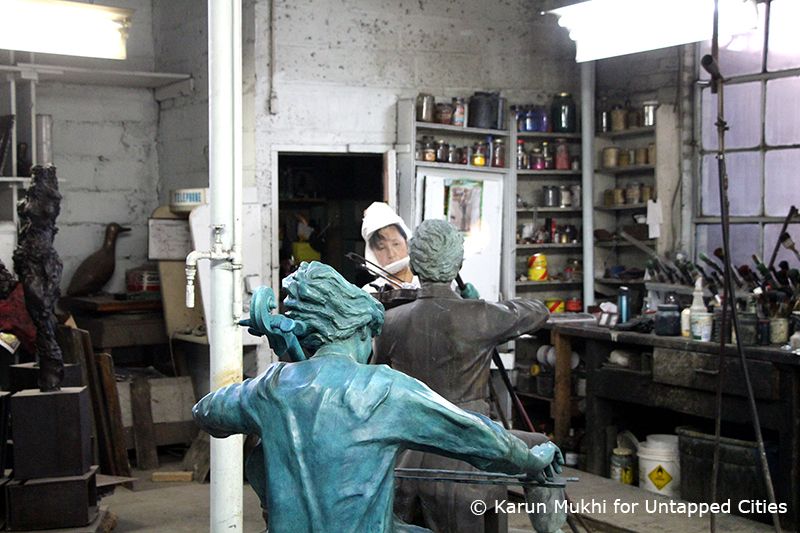
Using flames and chemicals, the sculpture being worked on will eventually share its color with the finished one in the foreground.
If all of this sounds painstaking and complicated, believe us, it is. It is in these many stages that the experience of the foundry staff and their care and attention that counts. Mr. Spring remarked that the process may last for up to a year depending on the size and complexity of the piece being created. Artists can often be quite demanding, something that forms a part of the daily challenge at the Modern Art Foundry.
The People
During our visit, we met with sculptor Anne Stanner who was working on an artwork that was being reduced in size for a client. Ms. Stanner herself was working on the wax copy of the sculpture, making fine corrections and adjustments. She has been working for several months on this project and is about halfway through. She commented on the process being laborious. Sculpting is certainly not for the faint-of-heart!

Jeffrey Spring & Anne Stanner discuss her artwork-in-progress
Further on in the tour, we met with Michael Bartolotta, a craftsman working with the foundry for nearly 40 years. We interrupted his process of polishing an aluminum artwork that had been cast in several different pieces. He told us that the process used in a foundry has been more or less the same for centuries and is a true classical art form. While finishing or polishing processes may have changed, foundry work remains a stepped process that takes time and passion.

Michale Bartolotta has worked for nearly 40 years at the foundry and calls himself a jack-of-all-trades
Mr. Bartolotta began working with the foundry “by accident” as he puts it. It was his first real job in his teenage years during a summer holiday and he has stuck with them in the many decades since. While speaking with him, we learned more and more that there are no short cuts in this process.
Tours, Education & The Future
The Modern Art Foundry does conduct tours, typically for clients of auction houses and art dealers such as Christie’s and Sotheby’s, essentially with the aim of educating customers about the rigors and challenges involved in sculpture making. Currently, a few students are working out of the foundry as a part of their studies. In an art form such as this, hands-on experience counts for a lot and Mr. Spring was keen to point out the benefits that students experience regularly visiting a facility such as his.
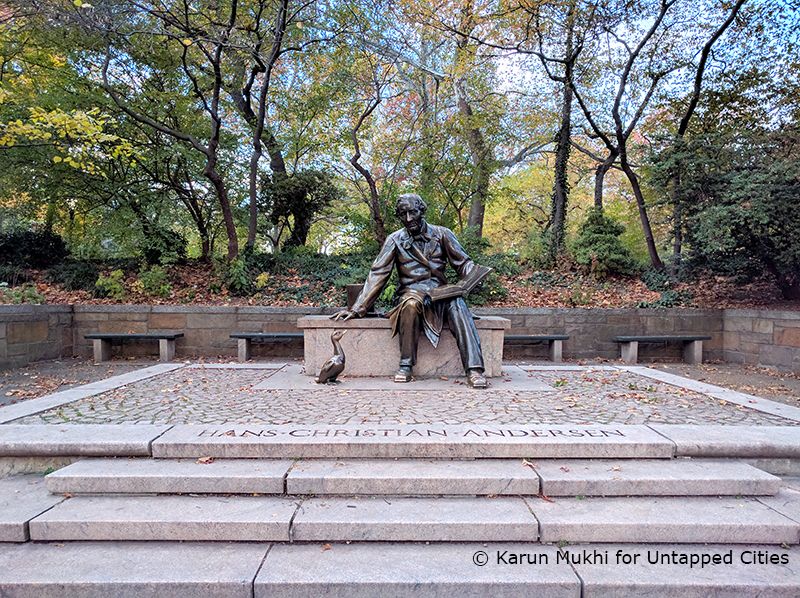
Hans Christian Andersen sculpture in Central Park – cast at The Modern Art Foundry
As with most traditional art forms, the future of sculpting is uncertain and Mr. Spring did not attempt to play oracle and predict where things will go. Along with producing new artwork, the foundry also provides restoration and cleaning services for existing sculptures, either in-house or on site. The advent of new technologies always challenges older methods, but in a field as individual and as complex as art, it would be hard to discount the possibility of the foundry going strong for three more generations and then some. For now, the focus remains on always improving and producing the most precise realization of an artist’s idea in metal form.

The former carriage house is now the production site for horse trophies used at the Breeder’s Cup
So the next time you walk past Hans Christian Andersen reading a book by a pond in Central Park or watch a race horse owner wave the bronze trophy at the Breeder’s Cup, remember that they have all come from a dedicated team in a quiet lane in Northern Astoria.
Join us for an upcoming Behind the Scenes etour ofthe Modern Art Foundry:
Behind-the-Scenes Tour of Modern Art Foundry
Next, check out the Top 15 Secrets of the Waldorf-Astoria Hotel.
Subscribe to our newsletter